【C++】list模拟实现
个人主页 : zxctscl
如有转载请先通知
文章目录
- 1. 前言
- 2. list源码
- 3. 初始化
- 3.1 构造
- 3.2 拷贝构造
- 3.3 赋值
- 3.4 析构
- 4. 迭代器
- 4.1 后置加加和前置加加
- 4.2 后置减减和前置减减
- 4.3 解引用
- 4.4 `!=`和`==`
- 4.5 begin 和 end
- 4.6 const迭代器
- 4.7 迭代器优化
- 5. Modifiers
- 5.1 insert
- 5.2 push_back
- 5.3 push_front
- 5.4 erase
- 5.5 pop_back
- 5.6 pop_front
- 5.7 重载operator->
- 5.8 swap
- 5.9 clear
- 6. 附代码
1. 前言
在前面一篇博客中分享了list的相关介绍 【C++】list介绍,这次来模拟实现一下list。
2. list源码
成员变量:

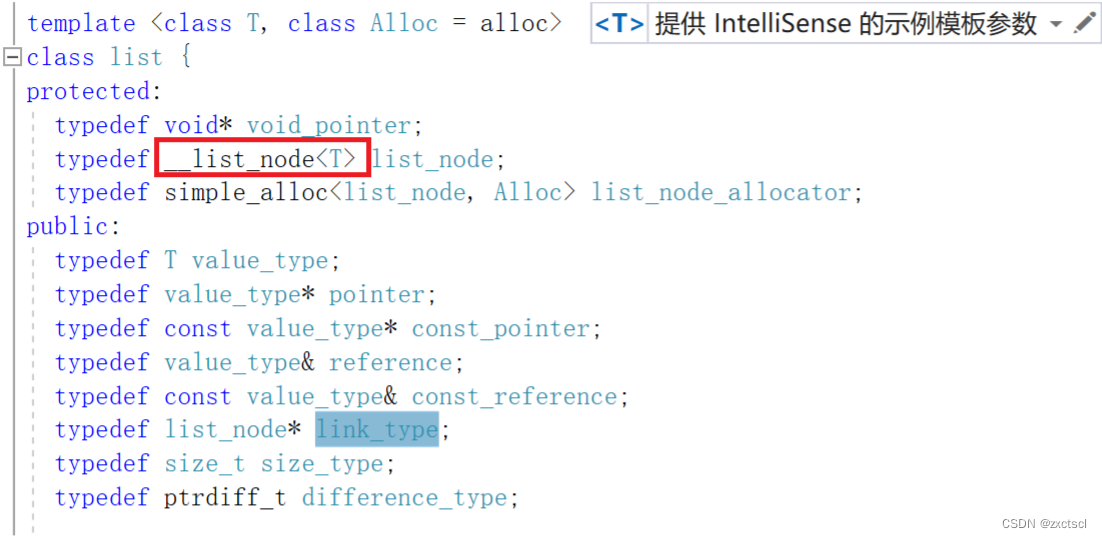
无参构造:
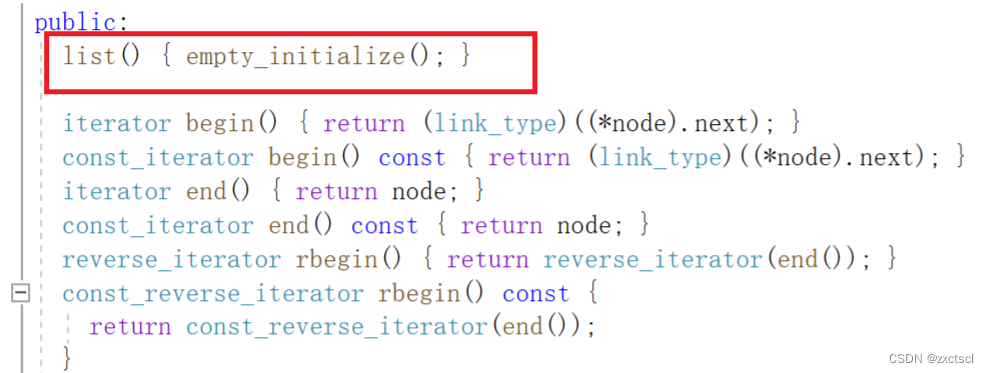
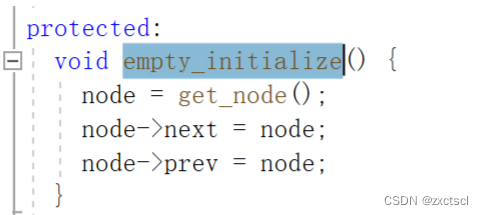
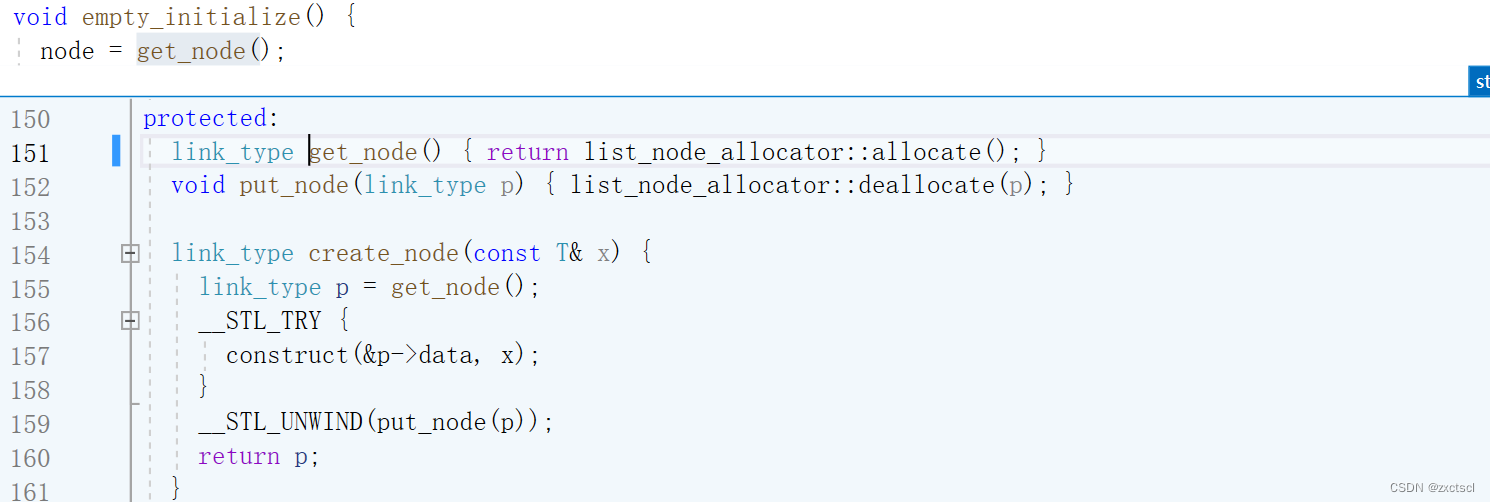
插入:

3. 初始化
在库里面定义节点需要全部公有时用到的就是struct:
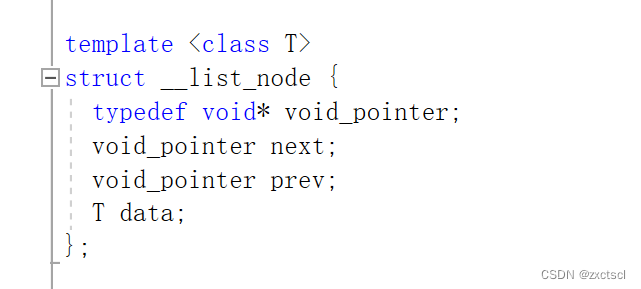
这里我们也用相同方法自己定义出一个节点:
template<class T>struct ListNode{ListNode<T>* _next;ListNode<T>* _prev;T _data;ListNode(const T& x = T()):_next(nullptr),_prev(nullptr),_data(x){}};
然后在写list类时候就要用到上面结构体。
list类里面成员变量就有:
private:Node* _head;3.1 构造
先来一个无参构造,实现的双向带头循环链表,先定义哨兵位节点,让它的next和prev都指向自己:
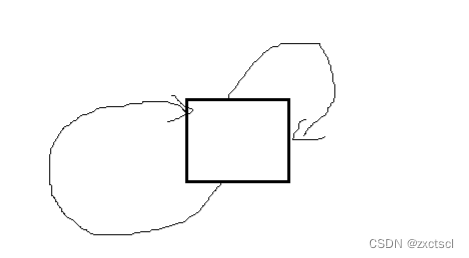
list(){_head = new Node;_head->_next = _head;_head->_prev = _head;_size = 0;}
3.2 拷贝构造
链表的拷贝构造,先写一个初始化链表的函数:
void empty_init(){_head = new Node;_head->_next = _head;_head->_prev = _head;_size = 0;}
就直接在初始化的基础上,遍历拷贝的数据,再把数据全部插入到新链表就可以了:
list(const list<T>& lt){empty_init();for (auto& e : lt){push_back(e);}}
测试一下:
void test_list3(){list<int> lt;lt.push_back(1);lt.push_back(2);lt.push_back(3);lt.push_back(4);lt.push_back(5);PrintList(lt);list<int> lt1(lt);PrintList(lt1);}
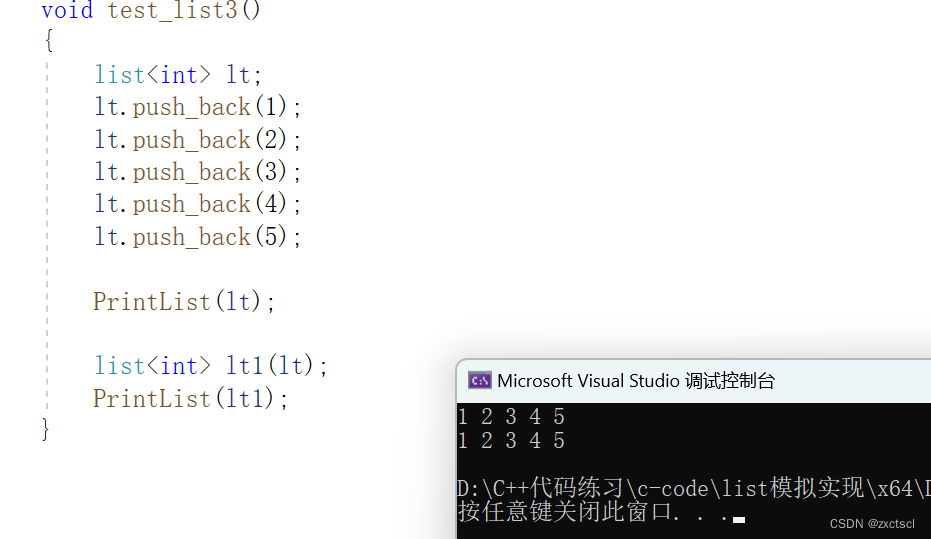
3.3 赋值
直接复用swap,出了作用域lt之前的数据会销毁,再返回*this就可以了。
list<T>& operator=(list<T> lt){swap(lt);return *this;}
3.4 析构
析构在clear的基础上,要把哨兵位也删除
~list(){clear();delete _head;_head = nullptr;}
怎么判断要不要析构?
如果需要析构,一般就需要自己写深拷贝
如果不需要析构,一般就不需要自己写深拷贝,默认浅拷贝就可以
4. 迭代器
这里原生指针不能充当迭代器,list物理空间不连续,这里Node*加加不能到下一个节点,而且解引用Node*是Node也不能找到数据。这时Node*已经不能满足需求了,这里就得封装一个类。内置类型不能满足需求,就自定义类型。
来看看库里面是怎么实现的:
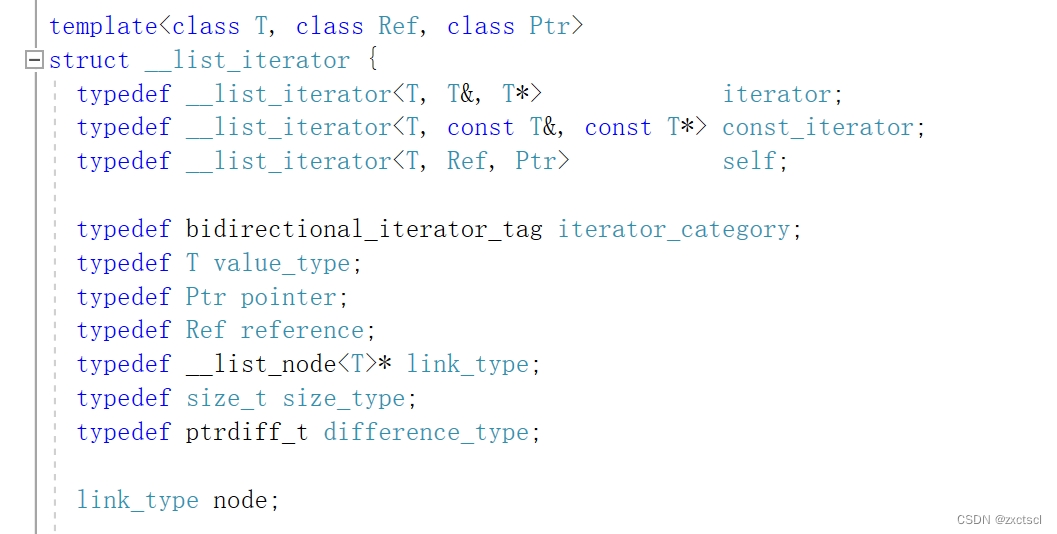
来实现一下:
typedef ListNode<T> Node;typedef ListIterator<T> Self;Node* _node;ListIterator(Node* node):_node(node){}4.1 后置加加和前置加加
实现加加,加加就到下一个位置,需要迭代器去访问
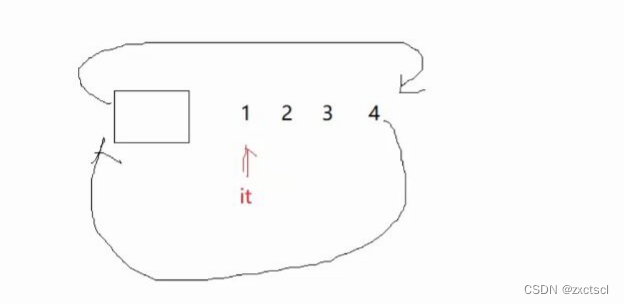
代码实现:
Self& operator++(){_node = _node->_next;return *this;}
前置加加:返回的是加加之前的node,所以得先记录下数据(拷贝构造一份),再加加,然后返回之前记录下的节点。
Self& operator++(int){Self tmp(*this);_node = _node->_next;return tmp;}
4.2 后置减减和前置减减
后置减减和后置加加类似:
Self& operator--(){_node = _node->_prev;return *this;}前置减减和前置加加类似:
Self& operator--(int){Self tmp(*this);_node = _node->_prev;return tmp;}
4.3 解引用
这里*it返回的是什么值?
要返回的时节点里面的data
T& operator*(){return _node->_data;}
4.4 !=和==
比较两个迭代器相不相等,比较的是节点的指针
bool operator!=(const Self& it){return _node != it._node;}
重载==:
bool operator==(const Self& it){return _node == it._node;}
4.5 begin 和 end
begin执行第一个节点,也就是head的next
iterator begin(){return iterator(_head->_next);}
这里是用来匿名对象来构造迭代器:

还可以写成:
单参数的构造,支持隐私类型转换
iterator begin(){return _head->_next;}

end指向的是head
iterator end(){return iterator(_head);}
4.6 const迭代器
不能直接在原来的迭代器上面加上const,会导致普通迭代器就不能修改了。
const迭代器,需要是迭代器不能修改,还是迭代器指向的内容?
迭代器指向的内容不能修改!const iterator不是我们需要const迭代器,所以不能在普通迭代器的前面加const。
使用就增加一个重载的const迭代器:
const_iterator begin() const{return _head->_next;}const_iterator end() const{return _head;
那么就得单独搞一个类ListConstIterator,让const迭代器*it不能修改:再把相同的操作符重载一下
template<class T>struct ListConstIterator{typedef ListNode<T> Node;typedef ListConstIterator<T> Self;Node* _node;ListConstIterator(Node* node):_node(node){}// *itconst T& operator*(){return _node->_data;}// it->const T* operator->(){return &_node->_data;}// ++itSelf& operator++(){_node = _node->_next;return *this;}Self operator++(int){Self tmp(*this);_node = _node->_next;return tmp;}Self& operator--(){_node = _node->_prev;return *this;}Self operator--(int){Self tmp(*this);_node = _node->_prev;return tmp;}bool operator!=(const Self& it){return _node != it._node;}bool operator==(const Self& it){return _node == it._node;}};
4.7 迭代器优化
发现普通迭代器和const迭代器里面很多运算符都是一样的,而const迭代器里面就直是不能修改指向的内容,代码显得冗余。就可以用模板来修改这两个类,把他们两个融成一个类。
就是返回值的类型不同,就用模板变,用一个模板参数:template<class T, class Ref, class Ptr>:
template<class T, class Ref, class Ptr>struct ListIterator{typedef ListNode<T> Node;typedef ListIterator<T, Ref, Ptr> Self;Node* _node;ListIterator(Node* node):_node(node){}// *it//T& operator*()Ref operator*(){return _node->_data;}// it->//T* operator->()Ptr operator->(){return &_node->_data;}// ++itSelf& operator++(){_node = _node->_next;return *this;}Self operator++(int){Self tmp(*this);_node = _node->_next;return tmp;}Self& operator--(){_node = _node->_prev;return *this;}Self operator--(int){Self tmp(*this);_node = _node->_prev;return tmp;}bool operator!=(const Self& it){return _node != it._node;}bool operator==(const Self& it){return _node == it._node;}};
本质上相当于我们写了一个类模板,编译器实例化生成两个类。
从而在list类里面就修改为:
typedef ListIterator<T, T&, T*> iterator;typedef ListIterator<T, const T&, const T*> const_iterator;
5. Modifiers
5.1 insert
insert实现在某一个位置之前插入一个节点
先搞一个节点,然后记录原链表pos位置的指针,然后一前一后改指向
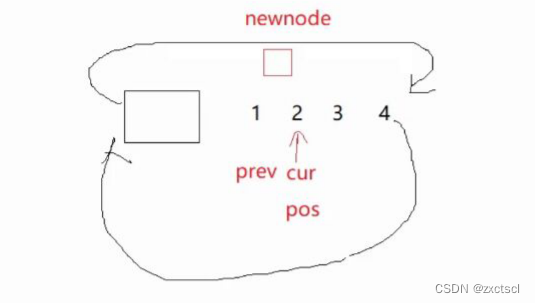
void insert(iterator pos, const T& x){Node* cur = pos._node;Node* newnode = new Node(x);Node* prev = cur->_prev;prev->_next = cur;newnode->_prev = prev;newnode->_next = cur;cur->prev = newnode;}
5.2 push_back
新开一个节点,然后让原链表的tail指向新节点,让新节点的prev指向tail,再把head的prev改为新节点,新节点的next改为head。
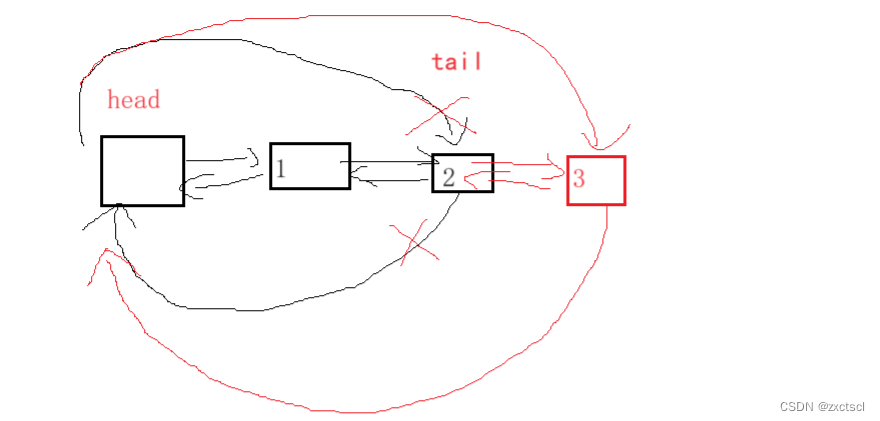
代码实现:
void push_back(const T& x){Node* newnode = new Node(x);Node* tail = _head->_prev;tail->_next = newnode;newnode->_prev = tail;newnode->_next = _head;_head->_prev = newnode;}
来测试一下:
void test_list1(){list<int> lt;lt.push_back(1);lt.push_back(2);lt.push_back(3);lt.push_back(4);lt.push_back(5);list<int>::iterator it = lt.begin();while (it != lt.end()){cout << *it << " ";it++;}cout << endl;}
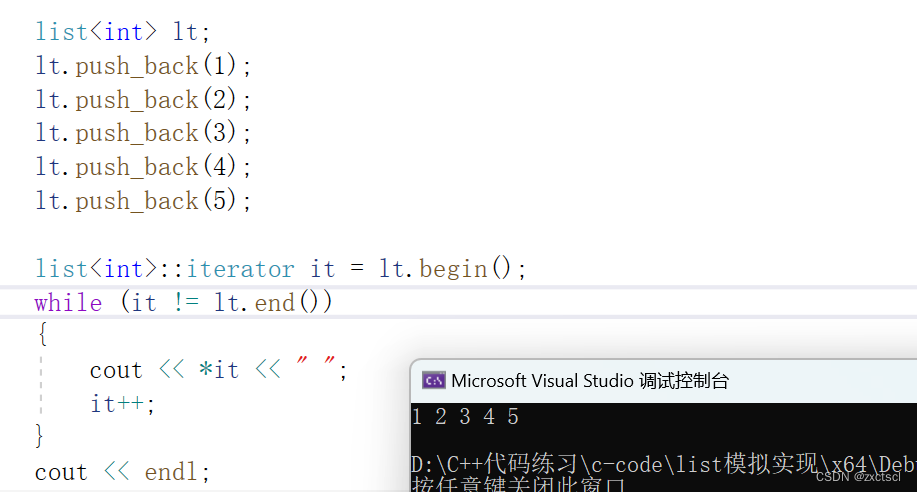

push_back用erase来实现会更简单:在end位置插入一个数
void push_back(const T& x){insert(end(), x);}
5.3 push_front
头插就是在begin插入一个数:
void push_front(const T& x){insert(begin(), x);}
测试一下:

5.4 erase
先记录下要删除的节点,和它前一个节点prev 还有它的后一个节点next。然后让prev的_next 指向next;next的_prev 指向 prev。
删除会导致迭代器失效的问题,为了避免,就返回删除节点的下一个位置。
iterator erase(iterator pos){Node* cur = pos._node;Node* prev = cur->_prev;Node* next = cur->_next;prev->_next = next;next->_prev = prev;delete cur;return iterator(next);}
5.5 pop_back
尾删复用erase,而尾是在end前面的一个位置,所以先减减end再删除
void pop_back(){erase(--end());}
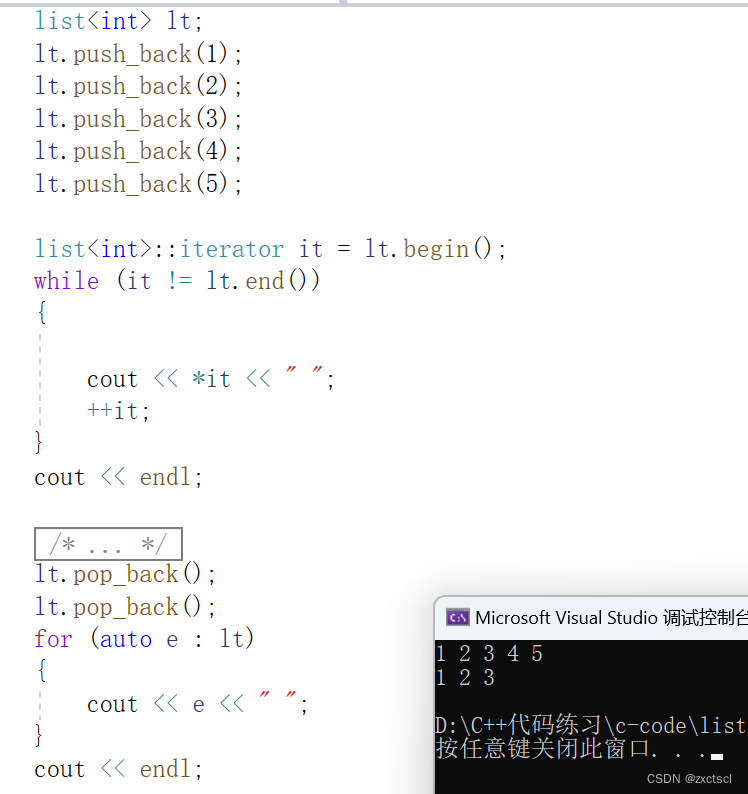
5.6 pop_front
因为begin所在的位置就是头节点,所以直接删除begin就可以:
void pop_front(){erase(begin());}
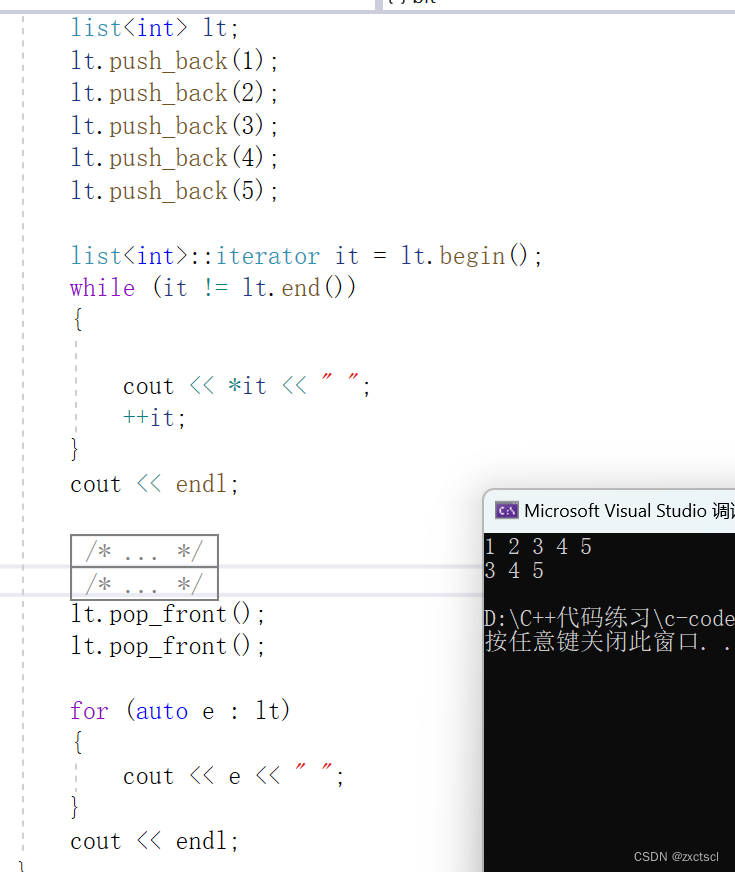
5.7 重载operator->
用户自定义一个类型:
struct A{int _a1;int _a2;A(int a1 = 0, int a2 = 0):_a1(a1), _a2(a2){}};
调用push_back插入数据,可以是匿名对象,也可以多参数进行隐式类型转换:
list<A> lt;A aa1(1, 1);A aa2 = { 1, 1 };lt.push_back(aa1);lt.push_back(aa2);lt.push_back(A(2, 2));lt.push_back({ 3, 3 });lt.push_back({ 4, 4 });
但是要把数据输出到屏幕上,使用*it是不可以的:
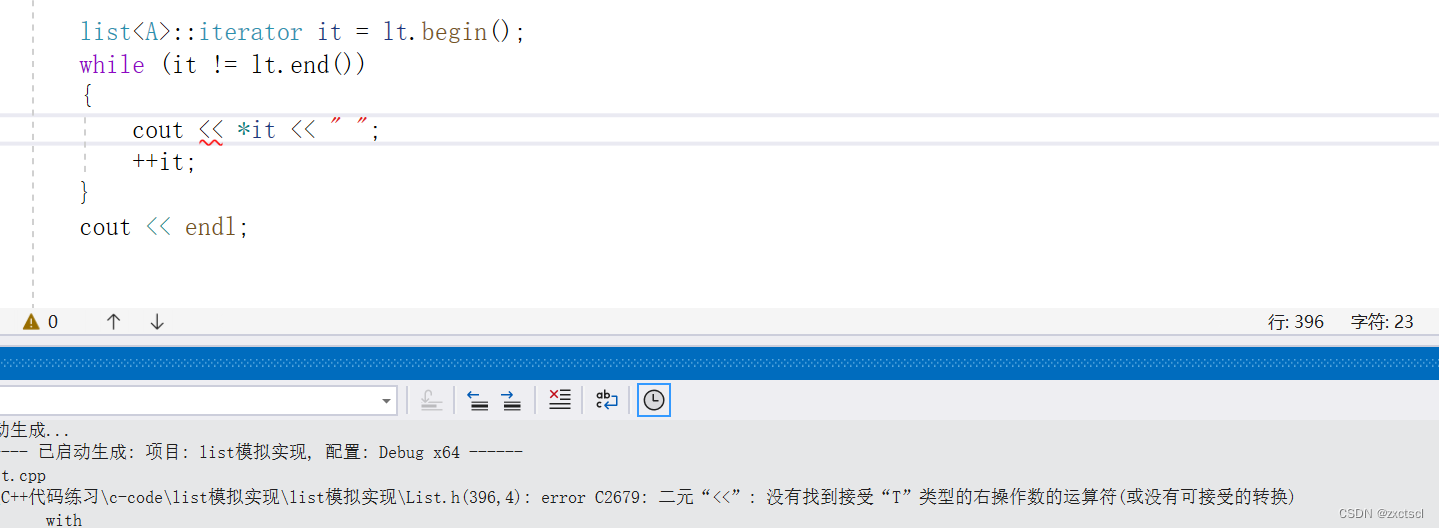
A是一个自定义类型,A不支持流插入,要想指出就得自己写一个重载一个。如果不想写,可以换个方式,这里的数据是公有的可以直接访问。
就直接*it返回的是A,再拿到a1和a2的数据就可以:
list<A>::iterator it = lt.begin();while (it != lt.end()){cout <<(*it)._a1<<":" << (*it)._a2 <<endl;++it;}cout << endl;
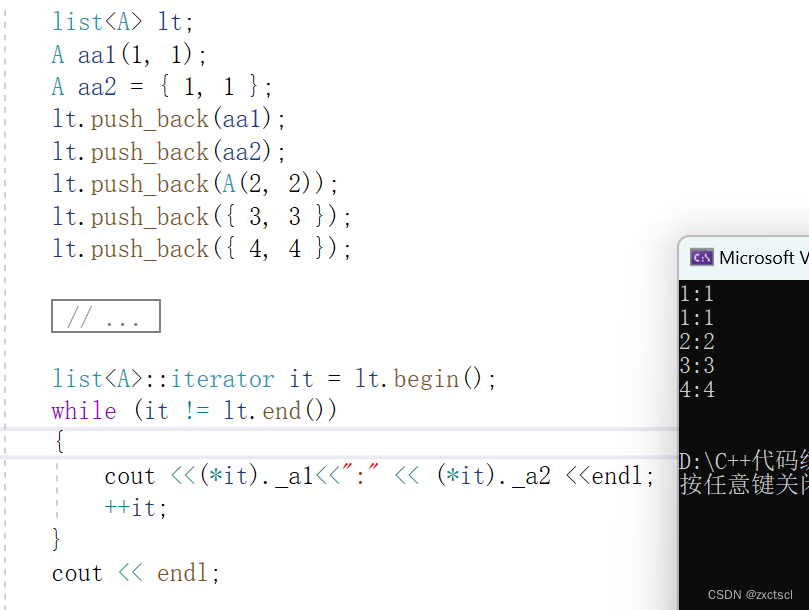

这里A*的一个指针访问数据是先解引用,返回A对象,再来.对象里面的成员变量:
A* ptr = &aa1;(*ptr)._a1;
迭代器就是想要模仿A*的行为,所以迭代器就重载了一个->:it->,它返回的是data的地址。
T* operator->(){return &_node->_data;}
访问它里面的就是这样:
cout << it->_a1 << ":" << it->_a2 << endl;
其实是编译器为了可读性,省略了一个箭头:第一个箭头是运算符重载,就返回data里面的地址也就是A*,第二个箭头就能访问A里面的数据了。

原生指针的行为就是:
cout << it.operator->()->_a1 << ":" << it.operator->()->_a2 << endl;
测试一下都能使用:
void test_list2(){list<A> lt;A aa1(1, 1);A aa2 = { 1, 1 };lt.push_back(aa1);lt.push_back(aa2);lt.push_back(A(2, 2));lt.push_back({ 3, 3 });lt.push_back({ 4, 4 });list<A>::iterator it = lt.begin();while (it != lt.end()){cout << it->_a1 << ":" << it->_a2 << endl;cout << it.operator->()->_a1 << ":" << it.operator->()->_a2 << endl;++it;}cout << endl;}
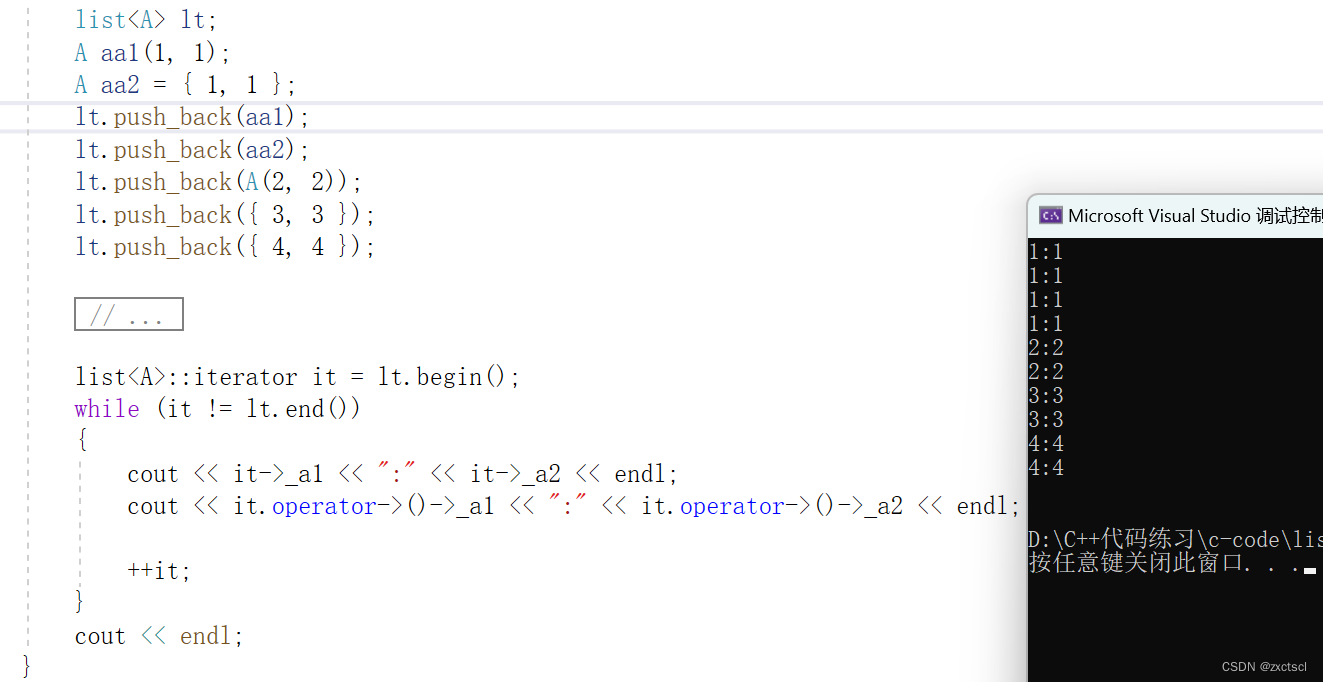
5.8 swap
直接调用库里面的swap来交换:
void swap(list<T>& lt){std::swap(_head, lt._head);std::swap(_size, lt._size);}
5.9 clear
clear清理掉所有数据,直接复用迭代器来把数据全部删除,但是没有清理掉哨兵位head
void clear(){iterator it = begin();while (it != end()){it = erase(it);}}
6. 附代码
#pragma once
#include<iostream>
using namespace std;
#include<assert.h>namespace bit
{template<class T>struct ListNode{ListNode<T>* _next;ListNode<T>* _prev;T _data;ListNode(const T& x = T()):_next(nullptr), _prev(nullptr), _data(x){}};// typedef ListIterator<T, T&, T*> iterator;// typedef ListIterator<T, const T&, const T*> const_iterator;template<class T, class Ref, class Ptr>struct ListIterator{typedef ListNode<T> Node;typedef ListIterator<T, Ref, Ptr> Self;Node* _node;ListIterator(Node* node):_node(node){}// *it//T& operator*()Ref operator*(){return _node->_data;}// it->//T* operator->()Ptr operator->(){return &_node->_data;}// ++itSelf& operator++(){_node = _node->_next;return *this;}Self operator++(int){Self tmp(*this);_node = _node->_next;return tmp;}Self& operator--(){_node = _node->_prev;return *this;}Self operator--(int){Self tmp(*this);_node = _node->_prev;return tmp;}bool operator!=(const Self& it){return _node != it._node;}bool operator==(const Self& it){return _node == it._node;}};//template<class T>//struct ListConstIterator//{// typedef ListNode<T> Node;// typedef ListConstIterator<T> Self;// Node* _node;// ListConstIterator(Node* node)// :_node(node)// {}// // *it// const T& operator*()// {// return _node->_data;// }// // it->// const T* operator->()// {// return &_node->_data;// }// // ++it// Self& operator++()// {// _node = _node->_next;// return *this;// }// Self operator++(int)// {// Self tmp(*this);// _node = _node->_next;// return tmp;// }// Self& operator--()// {// _node = _node->_prev;// return *this;// }// Self operator--(int)// {// Self tmp(*this);// _node = _node->_prev;// return tmp;// }// bool operator!=(const Self& it)// {// return _node != it._node;// }// bool operator==(const Self& it)// {// return _node == it._node;// }//};template<class T>class list{typedef ListNode<T> Node;public://typedef ListIterator<T> iterator;//typedef ListConstIterator<T> const_iterator;typedef ListIterator<T, T&, T*> iterator;typedef ListIterator<T, const T&, const T*> const_iterator;//iterator begin()//{// //return iterator(_head->_next);// iterator it(_head->_next);// return it;//}iterator begin(){return _head->_next;}iterator end(){return _head;}const_iterator begin() const{return _head->_next;}const_iterator end() const{return _head;}void empty_init(){_head = new Node;_head->_next = _head;_head->_prev = _head;_size = 0;}list(){empty_init();}// lt2(lt1)list(const list<T>& lt){empty_init();for (auto& e : lt){push_back(e);}}void swap(list<T>& lt){std::swap(_head, lt._head);std::swap(_size, lt._size);}// lt1 = lt3list<T>& operator=(list<T> lt){swap(lt);return *this;}void clear(){iterator it = begin();while (it != end()){it = erase(it);}}~list(){clear();delete _head;_head = nullptr;}/*void push_back(const T& x){Node* newnode = new Node(x);Node* tail = _head->_prev;tail->_next = newnode;newnode->_prev = tail;newnode->_next = _head;_head->_prev = newnode;}*/void push_back(const T& x){insert(end(), x);}void push_front(const T& x){insert(begin(), x);}void pop_back(){erase(--end());}void pop_front(){erase(begin());}void insert(iterator pos, const T& val){Node* cur = pos._node;Node* newnode = new Node(val);Node* prev = cur->_prev;// prev newnode cur;prev->_next = newnode;newnode->_prev = prev;newnode->_next = cur;cur->_prev = newnode;_size++;}iterator erase(iterator pos){Node* cur = pos._node;Node* prev = cur->_prev;Node* next = cur->_next;prev->_next = next;next->_prev = prev;delete cur;_size--;return iterator(next);}size_t size() const{return _size;}bool empty(){return _size == 0;}private:Node* _head;size_t _size;};void test_list1(){list<int> lt;lt.push_back(1);lt.push_back(2);lt.push_back(3);lt.push_back(4);lt.push_back(5);list<int>::iterator it = lt.begin();while (it != lt.end()){cout << *it << " ";++it;}cout << endl;/*lt.push_front(10);lt.push_front(20);lt.push_front(30);*//*lt.pop_back();lt.pop_back();for (auto e : lt){cout << e << " ";}cout << endl;*/lt.pop_front();lt.pop_front();for (auto e : lt){cout << e << " ";}cout << endl;}struct A{int _a1;int _a2;A(int a1 = 0, int a2 = 0):_a1(a1), _a2(a2){}};void test_list2(){list<A> lt;A aa1(1, 1);A aa2 = { 1, 1 };lt.push_back(aa1);lt.push_back(aa2);lt.push_back(A(2, 2));lt.push_back({ 3, 3 });lt.push_back({ 4, 4 });//A* ptr = &aa1;//(*ptr)._a1;//ptr->_a1;//list<A>::iterator it = lt.begin();//while (it != lt.end())//{// cout <<(*it)._a1<<":" << (*it)._a2 <<endl;// ++it;//}//cout << endl;list<A>::iterator it = lt.begin();while (it != lt.end()){cout << it->_a1 << ":" << it->_a2 << endl;cout << it.operator->()->_a1 << ":" << it.operator->()->_a2 << endl;++it;}cout << endl;}void PrintList(const list<int>& clt){list<int>::const_iterator it = clt.begin();while (it != clt.end()){//*it += 10;cout << *it << " ";++it;}cout << endl;}void test_list3(){list<int> lt;lt.push_back(1);lt.push_back(2);lt.push_back(3);lt.push_back(4);lt.push_back(5);PrintList(lt);list<int> lt1(lt);PrintList(lt1);}}相关文章:

【C++】list模拟实现
个人主页 : zxctscl 如有转载请先通知 文章目录 1. 前言2. list源码3. 初始化3.1 构造3.2 拷贝构造3.3 赋值3.4 析构 4. 迭代器4.1 后置加加和前置加加4.2 后置减减和前置减减4.3 解引用4.4 !和4.5 begin 和 end4.6 const迭代器4.7 迭代器优化 5. Modifi…...

ETL工具-nifi干货系列 第八讲 处理器PutDatabaseRecord 写数据库(详细)
1、本节通过一个小例子来讲解下处理器PutDatabaseRecord,该处理器的作用是将数据写入数据库。 如下流程通过处理器GenerateFlowFile 生成数据,然后通过处理器JoltTransformJSON转换结构,最后通过处理器PutDatabaseRecord将数据写入数据库。如…...

【MySQL】如何判断一个数据库是否出问题
在实际的应用中,其实大多数是主从结构。而采用主备,一般都需要一定的费用。 对于主备,如果主机故障,那么只需要直接将流量打到备机就可以,但是对于一主多从,还需要将从库连接到主库上。 对于切换的操作&a…...

SQLite数据库的性能问题并不是单纯地由数据量的大小决定的,而是受到多种因素的综合影响。以下是一些可能导致SQLite性能问题的因素
SQLite数据库的性能问题并不是单纯地由数据量的大小决定的,而是受到多种因素的综合影响。以下是一些可能导致SQLite性能问题的因素: 数据量:当SQLite数据库中的数据量增长到一定程度时,查询、插入和更新等操作可能会变得缓慢。这…...
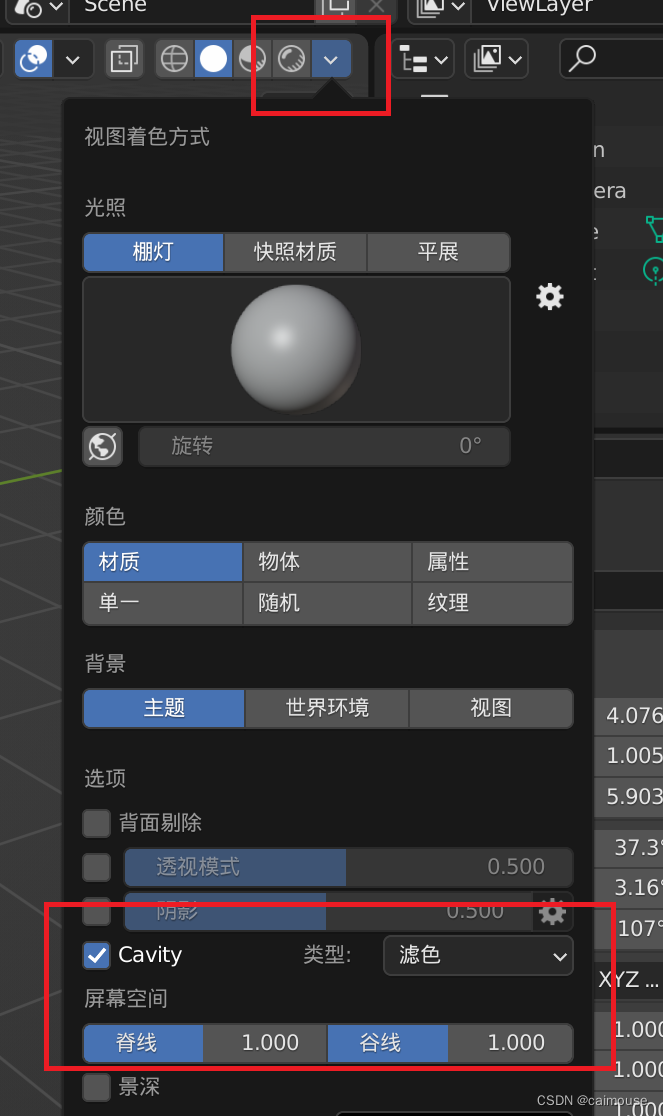
Blender怎么样启动默认移动和Cavity效果
在使用Blender的过程中,有一些特殊的技巧很重要。 比如默认地设置blender打开时,就是移动物体,这样怎么样设置的呢? 需要在界面里打开下面的菜单: 这样就找到默认设置的地方,把下面的移动勾选起来,这样点…...

Android 解决TextView多行滑动与NestedScrollView嵌套滑动冲突的问题
关键计算地方: 1.当前是上滑动还是下滑动(相对于屏幕) ,使用ev.getRawY()获得当前滑动位置在屏幕哪个地方 2. 计算文本客滑动到哪里即可停止, (行高*总文本行数)- (行高 * 最多显示行数) int sum getLineHeight() * getLineCount() - getLineHeight() * getMaxLines(); …...

Laravel 开发Api规范
一,修改时区 配置 config/app.php 文件 // 时区修改,感觉两者皆可,自己根据实际情况定义 timezone > PRC, // 大陆时间二,设置 Accept 头中间件 accept头即为客户端请求头,做成中间件来使用。Accept 决定了响应返…...

蓝色wordpress外贸建站模板
蓝色wordpress外贸建站模板 https://www.mymoban.com/wordpress/7.html...
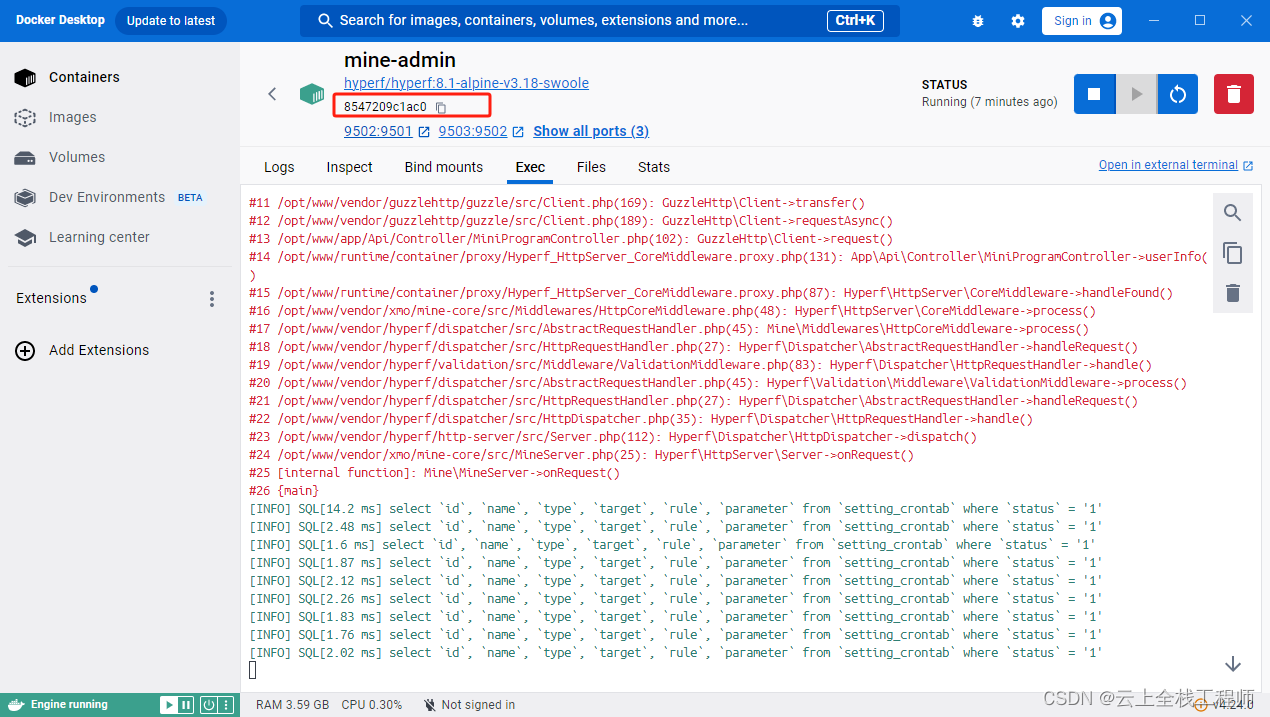
windos环境,使用docker容器运行项目的,新增外部访问地址配置
对于运行在 Docker 容器中的项目,你需要在容器内部编辑 resolv.conf 文件。以下是一种常见的方法: 进入正在运行的 Docker 容器:docker exec -it [container_id] bash其中 [container_id] 是你正在运行的 Docker 容器的 ID。 在容器内部使…...

设计模式:生活中的组合模式
想象一下,你正在组织一个大型的家庭聚会。在这个聚会中,你需要准备各种菜肴,每个菜肴又包含不同的食材。你的目标是能够以统一的方式处理整个聚会的准备工作,不论是处理单个食材还是一整道菜肴。 在这个场景中,我们可…...

WPF OnStartup
在Windows Presentation Foundation (WPF)框架中,OnStartup 是 System.Windows.Application 类的一个受保护的虚方法,它是应用程序启动过程中的一个重要环节。当一个 WPF 应用程序启动时,其入口点通常是 App.xaml 文件和对应的后台代码文件 A…...

docker-相关
打镜像 1、编写dockfile文件,请自行百度 2、docker build -t 镜像名称:版本号 dockerFile路径 3、docker save -o 镜像压缩包名称.tar 镜像名称:镜像版本号 部署镜像 1、将镜像tar包放到部署机器上 2、加载镜像:docker load -i 镜像tar包路径 3、dock…...

二十、Rust AOP 切面增强
用过 java spring 的同学,应该会对 AspectJ 的 前置、后置、环绕 增强 念念不忘,巧了 rust 也有类似能力,稍显不同的是,为了向 “零成本抽象” 靠齐,Rust 的 “增强” 是在编译期 完成的。 编译期生成,则离…...
)
掌握Go语言:Go语言精细错误,清晰、高效的错误处理实践(32)
错误处理是任何编程语言中都至关重要的一部分,Go 语言提供了一套简单而强大的错误处理机制,使得处理错误变得高效而清晰。 Go 错误类型 在 Go 中,错误是一个普通的接口类型,即 error 接口,其定义如下: t…...

Spring与Web环境的集成
1. ApplicationContext应用上下文获取方式 应用上下文对象是通过new ClasspathXmlApplicationContext(spring配置文件) 方式获取的,但是每次从容器中获得Bean时都要编写new ClasspathXmlApplicationContext(spring配置文件) ,这样的弊端是配置文件加载多…...
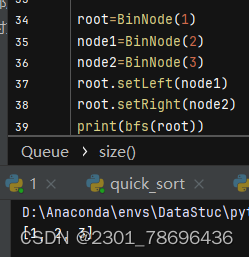
二叉树的遍历——bfs广度优先搜索
1、BinNode类的创建 (1)代码总览 ##(2)测试示例 2、二叉树的遍历 (1)图示 (2)代码总览 (3)测试示例...

飞鸟写作可靠吗 #职场发展#经验分享#经验分享
飞鸟写作是一个非常便捷的论文写作工具,不仅可以帮助用户高效地完成论文写作,还可以提供查重降重的功能,帮助用户确保论文的原创性。那么,飞鸟写作到底可靠吗?答案是肯定的。 首先,飞鸟写作提供的查重降重功…...
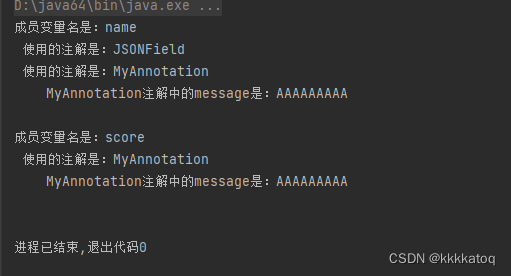
Java 实现自定义注解
一、interface 关键字 我们想定义一个自己的注解 需要使用 interface 关键字来定义。 如定义一个叫 MyAnnotation 的注解: public interface MyAnnotation { } 二、元注解 光加上 interface 关键字 还不够,我们还需要了解5大元注解 RetentionTargetDo…...

代码随想录Day48
Day 48 动态规划part09 今日任务 198.打家劫舍213.打家劫舍II337.打家劫舍III 代码实现 基础打家劫舍 class Solution {public static int rob(int[] nums) {if (nums null || nums.length 0) return 0;if (nums.length 1) return nums[0];int[] dp new int[nums.leng…...

Web 后台项目,权限如何定义、设置、使用:菜单权限、按钮权限 ts element-ui-Plus
Web 后台项目,权限如何定义、设置、使用:菜单权限、按钮权限 ts element-ui-Plus 做一个后台管理项目,里面需要用到权限管理。这里说一下权限定义的大概,代码不多,主要讲原理和如何实现它。 一、权限管理的原理 权限…...

Java如何权衡是使用无序的数组还是有序的数组
在 Java 中,选择有序数组还是无序数组取决于具体场景的性能需求与操作特点。以下是关键权衡因素及决策指南: ⚖️ 核心权衡维度 维度有序数组无序数组查询性能二分查找 O(log n) ✅线性扫描 O(n) ❌插入/删除需移位维护顺序 O(n) ❌直接操作尾部 O(1) ✅内存开销与无序数组相…...

安宝特方案丨XRSOP人员作业标准化管理平台:AR智慧点检验收套件
在选煤厂、化工厂、钢铁厂等过程生产型企业,其生产设备的运行效率和非计划停机对工业制造效益有较大影响。 随着企业自动化和智能化建设的推进,需提前预防假检、错检、漏检,推动智慧生产运维系统数据的流动和现场赋能应用。同时,…...
)
postgresql|数据库|只读用户的创建和删除(备忘)
CREATE USER read_only WITH PASSWORD 密码 -- 连接到xxx数据库 \c xxx -- 授予对xxx数据库的只读权限 GRANT CONNECT ON DATABASE xxx TO read_only; GRANT USAGE ON SCHEMA public TO read_only; GRANT SELECT ON ALL TABLES IN SCHEMA public TO read_only; GRANT EXECUTE O…...
-HIve数据分析)
大数据学习(132)-HIve数据分析
🍋🍋大数据学习🍋🍋 🔥系列专栏: 👑哲学语录: 用力所能及,改变世界。 💖如果觉得博主的文章还不错的话,请点赞👍收藏⭐️留言Ǵ…...
)
C++课设:简易日历程序(支持传统节假日 + 二十四节气 + 个人纪念日管理)
名人说:路漫漫其修远兮,吾将上下而求索。—— 屈原《离骚》 创作者:Code_流苏(CSDN)(一个喜欢古诗词和编程的Coder😊) 专栏介绍:《编程项目实战》 目录 一、为什么要开发一个日历程序?1. 深入理解时间算法2. 练习面向对象设计3. 学习数据结构应用二、核心算法深度解析…...

Python+ZeroMQ实战:智能车辆状态监控与模拟模式自动切换
目录 关键点 技术实现1 技术实现2 摘要: 本文将介绍如何利用Python和ZeroMQ消息队列构建一个智能车辆状态监控系统。系统能够根据时间策略自动切换驾驶模式(自动驾驶、人工驾驶、远程驾驶、主动安全),并通过实时消息推送更新车…...

【Linux】Linux安装并配置RabbitMQ
目录 1. 安装 Erlang 2. 安装 RabbitMQ 2.1.添加 RabbitMQ 仓库 2.2.安装 RabbitMQ 3.配置 3.1.启动和管理服务 4. 访问管理界面 5.安装问题 6.修改密码 7.修改端口 7.1.找到文件 7.2.修改文件 1. 安装 Erlang 由于 RabbitMQ 是用 Erlang 编写的,需要先安…...

人工智能 - 在Dify、Coze、n8n、FastGPT和RAGFlow之间做出技术选型
在Dify、Coze、n8n、FastGPT和RAGFlow之间做出技术选型。这些平台各有侧重,适用场景差异显著。下面我将从核心功能定位、典型应用场景、真实体验痛点、选型决策关键点进行拆解,并提供具体场景下的推荐方案。 一、核心功能定位速览 平台核心定位技术栈亮…...

CppCon 2015 学习:Reactive Stream Processing in Industrial IoT using DDS and Rx
“Reactive Stream Processing in Industrial IoT using DDS and Rx” 是指在工业物联网(IIoT)场景中,结合 DDS(Data Distribution Service) 和 Rx(Reactive Extensions) 技术,实现 …...

大数据驱动企业决策智能化的路径与实践
📝个人主页🌹:慌ZHANG-CSDN博客 🌹🌹期待您的关注 🌹🌹 一、引言:数据驱动的企业竞争力重构 在这个瞬息万变的商业时代,“快者胜”的竞争逻辑愈发明显。企业如何在复杂环…...
